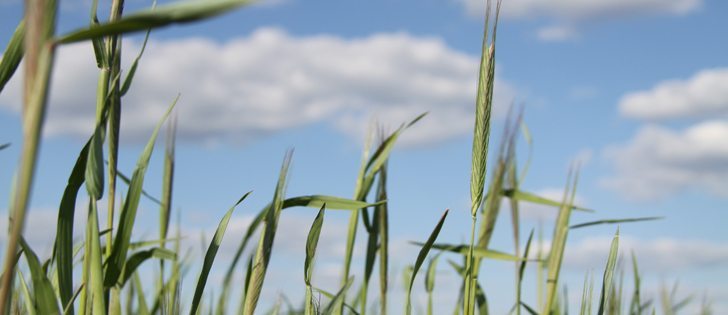Mild weather helped Most fields progressing ahead of schedule; producers reminded to watch for fusarium
Winter wheat growers in Manitoba and Saskatchewan are feeling more buoyant this spring after two years of minimal acres and one year with high levels of fusarium head blight.
Prairie acreage has doubled from last year and the 2012 crop looks fantastic, said Jake Davidson, executive director of Winter Cereals Canada.
“I haven’t seen a bad looking crop yet,” he said.
Winter wheat growers and cereal experts were worried about the fate of the crop earlier this year. Much of the Prairies had minimal snow cover and growers thought the wheat would be exposed to frigid temperatures. However, temperatures rarely dipped below – 25 C, said Brent Schram, a producer from Rapid City, Man.
Read Also

Farming Smarter to hold Agronomy Battles series
Southern Alberta non-profit research institute hope grassroots sessions with producers help focus future research on cover crops, strip tillage and herbicide resistance
“With the lack of the snow, the mild temperature (this winter) was a good thing,” he said.
Schram, who seeded 700 acres of winter wheat last fall, said his crop looks good and he expects it to head out in a week or so. Heads had already formed on other winter wheat fields in Manitoba by the end of May, suggesting the crop is progressing nicely and ahead of schedule.
“It got a good start last year. It got really good growth and root structure,” Davidson said.
“Hutterite colonies that I work with are guessing they will be harvesting in the third week of July.”
The crop isn’t heading yet on Mark Akins’ farm near Hearne, Sask., but his 480 acres are in great shape.
“I seeded it in good time in September and it looks unbelievable,” said Akins, whose crop was nearing the flag leaf stage in late May.
“ It’s a very aggressive, early crop. I sprayed it, in crop, probably three weeks ago, so it’s very early.”
Akins planted winter wheat last fall on two quarters that were too wet for spring seeding in 2010 and 2011. The other quarter was seeded into canola stubble.
All three quarters look great and Akins is especially pleased by the moisture removal.
“We’ve had a lot of water this spring and compared to everything else, it seems to be taking the water really well. Otherwise, your newly seeded spring crops, they’re just too small to take up any water.”
While Akins is an experienced winter wheat grower, many producers in southeastern Saskatchewan and southwestern Manitoba planted winter wheat this year onto unseeded fields simply to remove excess moisture from their land.
Akins said disease scouting and fungicide application will be key over the next several weeks. Growers need to watch out for signs of tan spot, septoria and rust.
“Definitely, protect that yield with fungicide,” Akins said. “When you’ve got a crop that’s leafy, with lots of yield potential … fungicide is money well spent.”
Fusarium head blight hammered winter wheat in Manitoba in 2010, and disease levels were significantly higher in winter wheat than in spring wheat.
Fusarium isn’t typically a significant risk for winter wheat because the crop normally flowers before hot and humid weather arrives.
Nonetheless, Schram isn’t willing to gamble on fusarium this year. He plans to spray his winter wheat fields in a month or so.
Davidson hopes growers who seeded the crop last fall to soak up excess moisture will develop a fondness for winter wheat this summer.
“I think when guys see yields 20 to 25 percent higher than their spring wheat crop, I think they’re going to fall in love.”
















